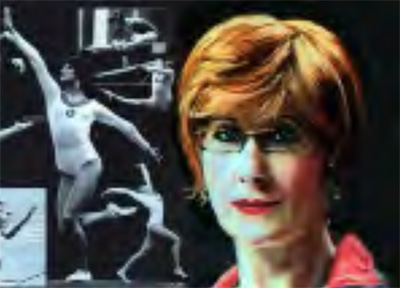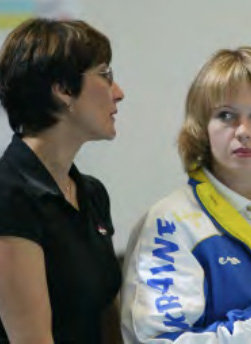
When Elvira Saadi came to Canada, she had no idea she would one day become head coach at the Cambridge Kips gymnastics club, the club that Don and Benita Rope had founded in Cambridge.
Saadi, a two-time Olympic gold medalist (1972 Munich, 1976 Montreal), had befriended fellow Olympian Patti Rope at the Montreal Olympics in 1976. Indeed, the Rope’s had taken her out to get her ears pierced during the Games.
Gymnastics has been a lifelong passion for Saadi, both as an athlete and as a coach.
“I just love it so much,” she confesses. “It’s my job, but it’s not just a job. It’s a hobby.”
Saadi’s efforts were recognized on May 30, 2009, with her induction into the International Gymnastics Hall of Fame with four other gymnastics legends, at the 13th annual induction ceremony in Oklahoma City.
Former American star Bart Connor was the emcee for the occasion and paid tribute to Saadi and the other honourees that year, showing a video montage of the former Russian standout, which included rare film footage and photos.

Although Saadi’s athletic career was largely overshadowed by her more well-known teammates like Olga Korbut and Lyudmila Turischeva, she played a key role in the Soviet Union’s victories in both Munich and Montreal.
A native of Tashkent, Uzbekistan, Saadi gained a love for gymnastics early. In the beginning, though, she didn’t have the opportunity to train at a gym. Indeed, after practicing for fun in her backyard, it wasn’t until she was 11 years old that she finally got the chance to train in a gym. By then, nobody would take her. But Saadi’s love for the sport, and the intrinsic satisfaction the sport brought to her would carry her to the pinnacle of the gymnastics world.
After Munich, she surprised many when she stayed in the sport, even though she would be 24 by the time of the 1976 Montreal Olympics.
“I made my second Olympic team because I loved it, not because I had to do it, not because someone pushed me,” she said.
With some training in ballet, and known for her expressive floor routines, she always equated her performance to art. “I am a person who can feel gymnastics. I can breathe it and feel it. Gymnastics gave me the chance to explain something, like a book (or) art.”
Those long-ago times with her former Soviet teammates, left a lasting impression on Saadi.
“Because we were together most of the time, we were close to each other,” she said. “All of us were individuals, everybody had something different …but we still respected each other. Sometimes were argued, but I think it was a good team. I liked all of them, and I think they’re still in my heart.”

She still keeps in touch, occasionally, though the years have distanced them.
After her competitive career was over she began coaching with Moscow Dynamo, where her top student was Tatiana Groshkova, but following the collapse of communism, she moved to Canada in 1991.
The main difference between coaching in Russia and in Canada? In Russia, she said, “they treat athletes more like material and don’t really consider the personality.” But in Canada, Saadi considers each athlete’s unique personality in their training regimen.
In her nearly two decades with the Kips, her coaching efforts, as well as the results of her gymnasts, have helped secure a solid reputation for the club the Ropes founded in the early 1970s.
By 2010, in her 17th year with the Kips – she coached at another Canadian club before joining the Kips – she had coached several high-pro- file Canadian gymnastics, including two-time Olympian Yvonne Tousek and Olympian Crystal Gilmore.
In 1996 Saadi was named Coach of the Year by the Canadian Gymnastics Federation, an honour that was repeated in 2004.
Saadi’s Olympic gold medals were first displayed in Cambridge in January 1998, when they were included in the inaugural displays of the Cambridge Sports Hall of Fame’s exhibit, Cambridge at the Olympics, at the Cambridge Centre.
Make a donation today, and support the Cambridge Sports Hall of Fame.
Cambridge Centre Mall
425 Hespeler RoadUnit #6, PO Box 444 Cambridge, Ontario N1R 8J6
General inquiries: info@cambridgeshf.com Archives and Nominations: cshf1@live.com
© 2025 All Rights Reserved.